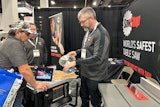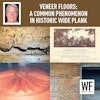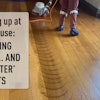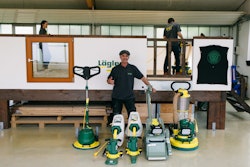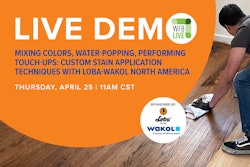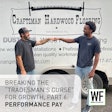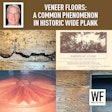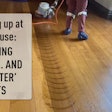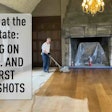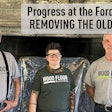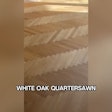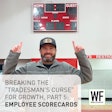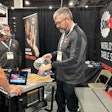We are going to start deconstructing some of the variables related to cupping and what many people believe are the causes of cupping.
A quick review of the initial post about this. Cupping = boards that are concave on the face. I have initially proposed six experiments where variables are limited so we can see which actions cause which reactions. The list of experiments is summarized below, but you can see the more complete explanations in my Dec. 11 blog post.
Experiment 1: 10 S4S RO boards ¾" x 4" x 72" edge-to-edge into a panel ¾" x 40" x 72". Place and tighten pipe clamps at 3" intervals across the 40" dimension. What happens?
Experiment 2: 10 pieces RO flooring ¾" x 4" x 72" edge-to-edge into a panel ¾" x 40" x 72". Place and tighten pipe clamps at 3" intervals across the 40" dimension. What happens?
Experiment 3: 10 pieces RO flooring ¾" x 4" x 72", MC 6%-8%, nailed to ¾" plywood with a MC of 6%-8%. Put a wet towel on the face of the boards with 6-mil ploy over towel. What happens?
Experiment 4: 10 pieces RO flooring ¾" x 4" x 72", MC 6%-8%, nailed to ¾" plywood with a MC of 14%-16%. 6-mil poly on underside of plywood. What happens?
Experiment 5: 10 pieces RO flooring ¾" x 4" x 72", MC 14%-16%, nailed to ¾" plywood with a MC of 6%-8%. 6-mil poly on underside of plywood. What happens?Experiment 6: 10 pieces RO flooring ¾" x 4" x 72", MC 14%-16%, nailed to ¾" plywood with a MC of 14%-16%. 6-mil poly on underside of plywood. What happens?
We are going to discuss Experiment 1 in greater detail this week. Here is the expanded description from Dec 11.
Experiment 1: We place 10 S4S red oak boards ¾" x 4" x 72" edge-to-edge, which approximates a panel ¾" x 40" x 72". Then place pipe clamps at 3" intervals across the 40" dimension and tighten the clamps until a pressure of 200 pounds per square inch is reached. What do you think is going to happen to the shape of the individual boards?
The intent of this experiment is to see what effect pressure would have on the shape of individual boards without any other compounding factors such as:
- changes in moisture content
- configuration of the tongue-and-groove edges
- mechanical fasteners along the edges or into the face
- gluing of the boards to a substrate
- configuration of the relief cuts on the bottom surface
If you were to place adhesive on the edges of the boards before clamping them, you would end up with a pretty good rough panel for fabricating a table top. This is the procedure for making any edge-glued panel out of solid wood (for example, stair treads, shelves, top-bottom-side panels, etc.). A bazillion of these solid wood panels are made this way every week. If the individual boards don't change shape because of this pressure across the width of the boards, this goes a long way toward refuting the argument that pressure by itself causes cupping. It may be that pressure in conjunction with some other factor(s) may cause cupping. However, based on Experiment 1, which has eliminated all other factors, pressure is not the cause of cupping.
After having proved that cupping is not caused by pressure, we need to start adding some new variables one at a time to see what effect the individual variables have. So, next week we will add the tongue-and-groove to the edges. After all, if you can't make something happen on purpose, how do you really know what caused it?
Bonus information:In the Wood Handbook Table 5-3a. Strength Properties of Some Commercially Important Woods Grown in the United States (metric) lists the "Compression Perpendicular to Grain of Red Oak" at 12% MC in the range from 6,000 to 8,600 kPa, which converts to 870 to 1247 psi (Pounds per Square Inch) using the conversion factor of 1 kPa (Kilopascal) = 0.145037738 psi. If the force applied to the pipe clamps is limited to 200 Psi, there should be no crushing where the jaws contact the edge of the panel.











